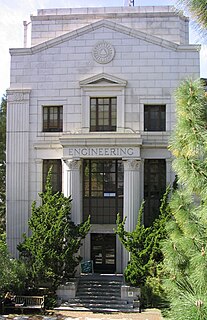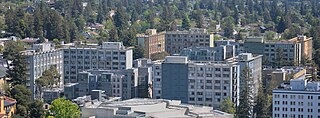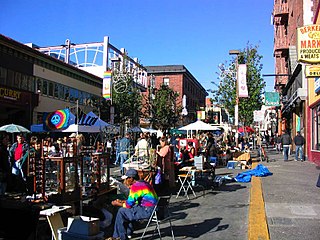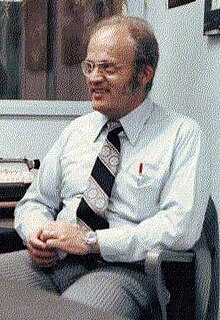Related Research Articles

The University of California, Berkeley is a public land-grant research university in Berkeley, California. Established in 1868 as the University of California, it is the state's first land-grant university and the first campus of the University of California system. Its fourteen colleges and schools offer over 350 degree programs and enroll some 31,800 undergraduate and 13,200 graduate students. Berkeley ranks among the world's top universities.

The College of Engineering, also known informally as Berkeley Engineering or CoE, is one of the fourteen schools and colleges at the University of California, Berkeley. Established in 1931, the college is considered one of the most prestigious and selective engineering schools in the world, ranked third by U.S. News & World Report and with an undergraduate acceptance rate of 7.6%. Berkeley Engineering is particularly well known for producing many successful entrepreneurs; among its alumni are co-founders and CEOs of some of the largest companies in the world, including Apple, Boeing, Google, Intel, and Tesla.

Sproul Plaza is one center of student activity at the University of California, Berkeley. It is divided into two sections: Upper Sproul and Lower Sproul. They are vertically separated by twelve feet (3.7 m) and linked by a set of stairs.

People's Park in Berkeley, California is located just east of Telegraph Avenue, bounded by Haste and Bowditch Streets, and Dwight Way, near the University of California, Berkeley. The park was created during the radical political activism of the late 1960s.

The University of California Marching Band, usually shortened to Cal Band, is the marching band for the University of California, Berkeley. While it is administered under the auspices of the university, the Cal Band is student-run and represents Cal at sporting events and social gatherings. The name of the band is "The University of California Band" by the constitution, but is typically called "The University of California Marching Band" or "The Cal Band". When the band marches out of Memorial Stadium's North Tunnel for football pre-games, it is referred to as "The Pacesetter of College Marching Bands, the Pride of California".

The Associated Students of the University of California (ASUC) is the autonomous and officially recognized students' association of the University of California, Berkeley. It is the only students' association within the University of California that is fully autonomous from the university administration. Founded in 1887, the ASUC is an independent, 501(c)(3) non-profit, and unincorporated association. The ASUC controls funding for all ASUC-sponsored organizations, advocates on behalf of students to solve issues on campus and in the community, engages with administrators to develop programming, increase student-organizational resources, and increase transparency.
The Heuristic Squelch, founded in 1991. It is the successor to Cal’s great humor tradition begun by The Pelican. It is a satirical magazine published three to four times a semester by students at UC Berkeley. The magazine distributes approximately 66,000 copies total each year in the Berkeley area as well as other parts of the state through a small subscription service. Though the paper was founded as an official ASUC-sponsored group in 1991, it lost that status in 1995 and was reformed in 1997. Only students of UC Berkeley are allowed to hold official positions in the Heuristic Squelch, but anyone is allowed to contribute material. The magazine won an award in 1999 from Rolling Stone for best college humor website. The Heuristic Squelch has also received disapproval for what critics see as tasteless humor. In 2000 a top ten list entry which referenced Filipinos drew condemnation from the ASUC and certain campus Filipino groups.

Housing at the University of California, Berkeley includes student housing facilities run by the office of Residential and Student Service Programs (RSSP). Housing is also offered by off-campus entities such as fraternities and sororities and the Berkeley Student Cooperative (BSC).

The campus of the University of California, Berkeley and its surrounding community are home to a number of notable buildings by early 20th-century campus architect John Galen Howard, his peer Bernard Maybeck, and their colleague Julia Morgan. Subsequent tenures as supervising architect held by George W. Kelham and Arthur Brown, Jr. saw the addition of several buildings in neoclassical and other revival styles, while the building boom after World War II introduced modernist buildings by architects such as Vernon DeMars, Joseph Esherick, John Carl Warnecke, Gardner Dailey, Anshen & Allen, and Skidmore, Owings and Merrill. Recent decades have seen additions including the postmodernist Haas School of Business by Charles Willard Moore, Soda Hall by Edward Larrabee Barnes, and the East Asian Library by Tod Williams Billie Tsien Architects.
The history of the University of California, Riverside, or UCR, started in 1907 when UCR was the University's Citrus Experiment Station. By the 1950s, the University had established a teaching-focused liberal arts curriculum at the site, in the spirit of a small liberal arts college, but California's rapidly growing population made it necessary for the Riverside campus to become a full-fledged general campus of the UC system, and it was so designated in 1959.

The Koala is a satirical comedy college paper. In its current form, it exists as two unaffiliated publications, with one primarily distributed quarterly on the campus of University of California San Diego, and monthly on the campus of San Diego State University. The publication at UCSD was one of a handful of campus newspapers partly or entirely funded by the Associated Students of UCSD, until a decision by AS UCSD to defund all 13 student media outlets. The paper still exists as a registered student organization. SDSU's branch of The Koala at one point operated within SDSU Associated Students as a Recognized Student Organization (RSO) until that status was revoked in 2007. The original branch of The Koala was founded at UCSD in 1982, but the details of its origins are uncertain. The composition of the paper consists of artwork, articles, personals, and lists similar to David Letterman's Top Ten List. The Koala's standing protocol when giving interviews to commercial media of any sort is that no statement can be given until they are furnished with beer from the interviewing entity. Exceptions are made for student media as a matter of courtesy.Therefore, it does give an insight into the live of a Koala, but does butify the situation as well.

CalTV is the first and only student-run online television station at University of California, Berkeley, producing videos in news, sports, and entertainment. Since its founding, CalTV has grown into one of the largest student-run media organizations on the West Coast and is currently a chartered organization of the Associated Students of the University of California (ASUC).

Southside, also known by the older names South of Campus or South Campus, is a neighborhood in Berkeley, California. Southside is located directly south of and adjacent to the University of California, Berkeley campus. Because of the large student presence in the neighborhood, proximity to Sproul Plaza, and history of the area, Southside is the neighborhood most closely associated with the university.
SLATE, a pioneer organization of the New Left and precursor of the Free Speech Movement and formative counterculture era, was a campus political party at the University of California, Berkeley from 1958 to 1966.
The history of the University of California, Berkeley begins on October 13, 1849, with the adoption of the Constitution of California, which provided for the creation of a public university. On Charter Day, March 23, 1868, the signing of the Organic Act established the University of California, with the new institution inheriting the land and facilities of the private College of California and the federal funding eligibility of a public agricultural, mining, and mechanical arts college.
The 1960s Berkeley protests were a series of events at the University of California, Berkeley, and Berkeley, California. Many of these protests were a small part of the larger Free Speech Movement, which had national implications and constituted the onset of the counterculture of the 1960s. These protests were headed under the informal leadership of students Mario Savio, Jack Weinberg, Brian Turner, Bettina Aptheker, Steve Weissman, Art Goldberg, Jackie Goldberg, and others.

The Berkeley Student Food Collective (BSFC) is a collectively-operated nonprofit grocery market founded by students of the University of California, Berkeley. The 650-square-foot storefront is located across the street from the university, on Bancroft Way.

The University of California Jazz Ensembles, also known as the UC Jazz Ensembles, UC Jazz, or UCJE, is the student jazz organization founded in 1967 on the University of California, Berkeley, campus. Founded in 1967, it comprises one or more big bands, numerous jazz combos, a vocal jazz ensemble, an alumni big band, and instructional classes. With a mission statement to foster a community for the performance, study, and promotion of jazz at U.C. Berkeley, its Wednesday Night big band provides free concerts every Thursday noon on Lower Sproul Plaza, its various units perform throughout the San Francisco Bay Area including area high schools, travel to collegiate jazz festivals, and perform overseas, and for many years it sponsored the annual Pacific Coast Jazz Festival. It also provides master classes by its instructors and clinics by prominent guest artists. It has nurtured numerous musicians who have become professional jazz musicians and educators. UC Jazz Ensembles is one of three groups, with the Cal (marching) Band and UC Choral Ensembles, forming Student Musical Activities (SMA), a department within Cal Performances on the U.C. Berkeley campus. Its members are primarily U.C. Berkeley undergraduate and graduate students, representing many academic disciplines.
The University of California, Santa Barbara (UCSB) traces its roots back to the 19th century, when it emerged from the Santa Barbara School District, which was formed in 1866 and celebrated its 145th anniversary in 2011. UCSB's earliest predecessor was the Anna S. C. Blake Manual Training School, named after Anna S. C. Blake, a sloyd-school which was established in 1891. From there, the school underwent several transformations, most notably its takeover by the University of California system in 1944.

The Free Speech Movement (FSM) was a massive, long-lasting student protest which took place during the 1964–65 academic year on the campus of the University of California, Berkeley. The Movement was informally under the central leadership of Berkeley graduate student Mario Savio. Other student leaders include Jack Weinberg, Michael Rossman, George Barton, Brian Turner, Bettina Aptheker, Steve Weissman, Michael Teal, Art Goldberg, Jackie Goldberg and others.
References
- ↑ "University of California History Digital Archives".
- ↑ "The Bancroft Library | UC Berkeley Library".
- ↑ Rube Goldberg, “Rube Goldberg,” in There Was Light: Autobiography of a University, Berkeley: 1868-1968, ed. Irving Stone (Garden City, New York: Doubleday & Company, 1970), 413
- ↑ "University of California History Digital Archives".
- ↑ "Berkeley Daily - golden opportunities".
- ↑ Garff B. Wilson, The Unidentified Man on the Right (Berkeley: Garff B Wilson, 1986), 103-104
- ↑ The New California Pelican, April 1971 (no volume or issue number), 1
- ↑ The California Pelican, Fall 1972, 4
- ↑ Christine Weicher, “ASUC Kills Student Journals.” Daily Californian, May 17, 1973, 1; “Three Publications Lose Funding.” San Francisco Chronicle, May 18, 1973, 6
- ↑ “Literary Publications Board Formed,” Daily Californian, April 4, 1974; “Literary Mags Will Publish Again,” Daily Californian, May 1, 1974
- ↑ "The Daily Californian". Archived from the original on 2007-03-13. Retrieved 2006-05-02.
- Sweetness and Light. Berkeley: Associated Students of the University of California, 1943.
- Cerny, Susan. "Pelican is a hidden UC campus treasure." Berkeley Daily Planet. December 1, 2001.
- Deenihan, Kevin. "Don't Forget, Again." Daily Californian. April 17, 2003.
- Goldberg, Rube. “Rube Goldberg.” In There Was Light: Autobiography of a University, Berkeley: 1868-1968, edited by Irving Stone. Garden City, New York: Doubleday & Company, 1970.
- Stadtman, Verne. Centennial Record. Berkeley: University of California Print. Dept., 1967. Available Online
- Wieder, Robert S. "We gave the world the bird" in the California Monthly. Berkeley: California Alumni Association, 2003. Available Online Reminiscences by former Pelican editor.
- Wilson, Garff B. The Unidentified Man on the Right. Berkeley: Garff B Wilson, 1986.
